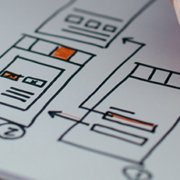Picturing Success: Unveiling the Crucial Role of Captivating Images in Website Design
When it comes to websites and web design, the visual appeal of a website is often attributed to its layout, color scheme, and overall design. However, an often overlooked but equally crucial aspect of a visually compelling website is the quality and relevance of its photos. In this article, we’ll explore why website photos are just as important as your website design and how they contribute to a seamless and engaging user experience.
First Impressions Matter
Your website is often the first point of contact between your brand and potential visitors. A well-designed website layout can capture attention, but high-quality and relevant photos are what make that first impression memorable. Users connect emotionally with visuals, and compelling images can convey your brand message more effectively than words alone.
Building Trust and Credibility
Quality photos add a layer of professionalism to your website, instilling trust and credibility in your audience. Whether you’re showcasing products, services, or your team, authentic and visually appealing images create a positive perception of your brand. Users are more likely to trust a website that invests in quality visuals, seeing it as a reflection of the brand’s commitment to excellence.
Enhancing User Engagement
Engaging website photos can significantly improve user engagement. Users are drawn to captivating visuals that tell a story or convey information effectively. Interactive elements like sliders, galleries, or image carousels can keep visitors engaged and encourage them to explore more content. This dynamic interaction contributes to a positive user experience and can increase the time users spend on your site.
Supporting Content and Messaging
While design sets the tone, photos support and reinforce your website’s content and messaging. Whether you’re telling a brand story, explaining a product, or sharing testimonials, relevant images enhance the overall narrative. Strategic use of visuals can break up text, making the content more digestible and enjoyable for users.
Mobile Responsiveness and Load Times
In the era of mobile browsing, the importance of optimizing website photos for different devices cannot be overstated. High-resolution images that are not properly optimized can slow down page load times, leading to a poor user experience. By choosing the right file formats, compressing images, and utilizing responsive design techniques, you ensure that your visuals maintain their quality across various devices without compromising speed.
SEO Benefits
Beyond aesthetics, website photos play a role in search engine optimization. Alt text, captions, and image descriptions provide search engines with valuable information about your content. Optimizing these elements can improve your website’s visibility in search results, driving organic traffic and expanding your online reach.
In the world of web design, the harmony between website photos and design is key to creating a visually stunning and impactful online presence. By recognizing the importance of high-quality, relevant visuals, you not only enhance the aesthetic appeal of your website but also contribute to user engagement, trust-building, and overall success in the competitive digital landscape. So, the next time you embark on a web design project, remember that the power of a picture is worth a thousand words in the virtual world. Reach out to me and I’ll make sure that your website has images that impress your visitors.







